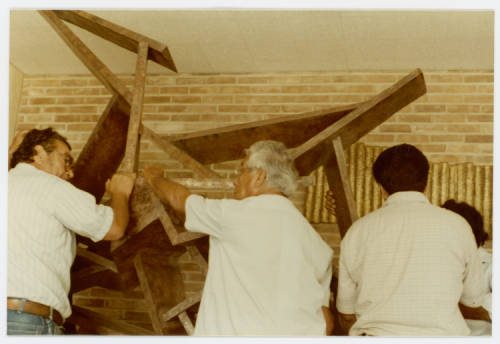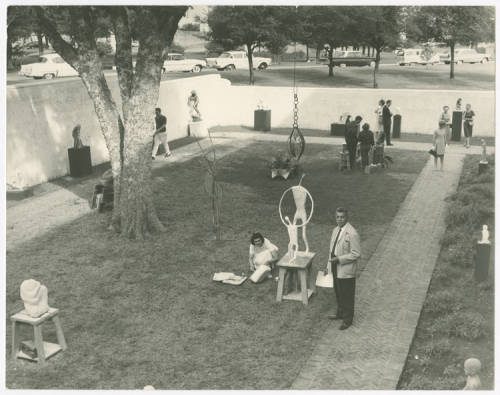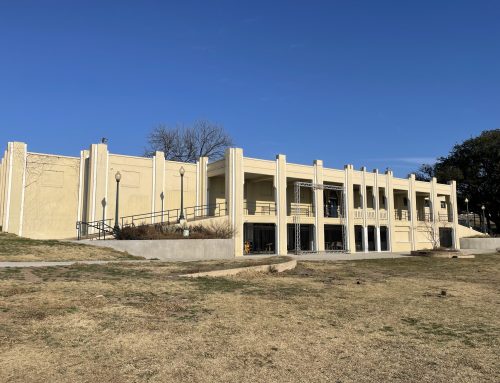
Octavio Medellín at El Sibil in the 1970s. Photo courtesy of the Bywaters Special Collections, Southern Methodist University.
Octavio Medellín, the Mexico-born sculptor and teacher whose work can still be found around Dallas, Austin and San Antonio, will receive a year-long retrospective at the Dallas Museum of Art.
The art school Medellín founded, which still exists as the Creative Arts Center in East Dallas, started out in Oak Cliff. Medellín opened the Octavio Medellín School of Sculpture in 1966 at El Sibil, the historic former home and studio of Oak Cliff painter Frank Reaugh, near Lake Cliff Park.
Medellín was born in San Luis Pososí the same year as Frida Khalo, in 1907, and he died in 1999.
“Medellín acted as guide and mentor to generations of aspiring artists, working with well-known figures such as Marty Ray, Tomas Bustos, and David Hickman,” a DMA media release states.
The exhibition, which will open in February 2022 and close in January 2023, will include 30 sculptures the artist made from 1926-1995.
From the DMA:
His sculptures of locally sourced wood and stone explore notions of tension in both the political and the personal. The monumental Spirit of the Revolution, made in Texas limestone, responds directly to his experiences of post-revolutionary Mexico. The Hanged, perhaps his most iconic work, alludes to the violence he witnessed as a young boy during the Mexican Civil War, but also has undeniable resonance with scenes of the lynching of Black and Brown men in the United States. Over the course of his career, as his work became increasingly abstract, Medellín experimented with metal and glass, and expanded his artistic practice into other mediums, such as printmaking, pottery, mosaic, and stained glass.
Medellín and his family began donating their archives to SMU in 1989, and it’s now housed in the Jerry Bywaters Collection.
Here is an excerpt from his bio, from SMU:
His family, of Otomi Indian heritage, moved to San Antonio, Texas in 1920 where the young Medellín began his art studies at the San Antonio Art Institute with José Arpa and Xavier Gonzales, Spanish artists who had relocated to San Antonio and established flourishing art careers. In 1928 Medellin left San Antonio and moved to Chicago where he studied at the Chicago Art Institute. A year later he returned to Mexico to begin a three-year study of his native country’s art, customs, and history – a period that proved to be a major influence in the young artist’s artistic evolution. He traveled throughout the Gulf Coast, including the Yucatan, and studied the local crafts produced in small villages and the ancient ruins and sculpture of the Mayan and Toltec Indians.
He later returned to San Antonio and taught at the Witte Museum and opened La Villita art gallery. He found a patron there in Lucy Maverick, who sponsored a six-month trip for him to study the ruins of Chichén Itzá and Uzmal.
He later taught at what is now the University of North Texas, SMU and the Dallas Museum of Fine Arts School. His public works that still exist include mosaic murals depicting the stations of the cross at St. Bernard of Clairvaux Church in Lakewood (here’s more about that project, which he undertook in 1957) and stained glass windows that were preserved from the demolished Trinity Lutheran Church in East Dallas and are now installed at the Moody Performance Hall and Love Field Airport. One of his later sculptures, The Promised Land, is installed at Temple Emanu El.
“This recognition for Octavio Medellín, an important artist in the history of our city and Museum, is long overdue. We are elated to honor his career and contribute new scholarship on his significant and diverse bodies of work,” said Agustín Arteaga, the DMA’s Eugene McDermott Director, in a media release. “Medellín’s grand legacy can be attributed to both his incredible talent and his enormous influence in our community as a mentor to so many. We hope this exhibition cements his place among the most important artists working in Texas in the 20th century.”
Here are more photos from Medellín’s life in Dallas.
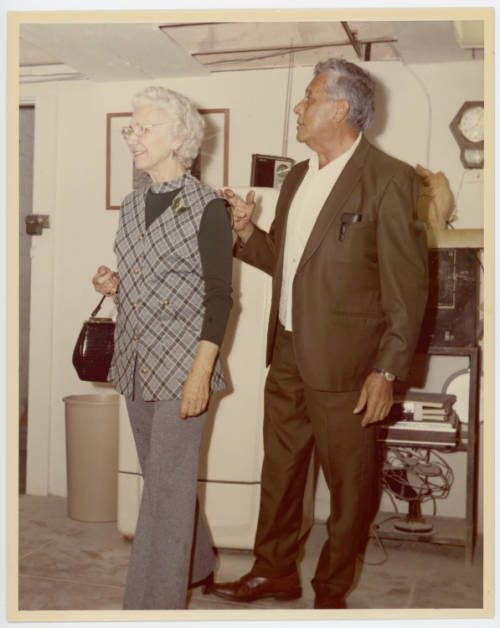
Medellín with his wife, Consuelo, at El Sibil. Photo courtesy of the Bywaters Special Collections, Southern Methodist University.
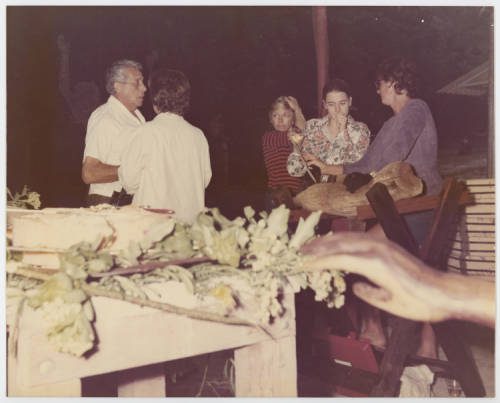
Medellín, left, with students at a reception at El Sibil in 1976. Photo courtesy of the Bywaters Special Collections, Southern Methodist University.
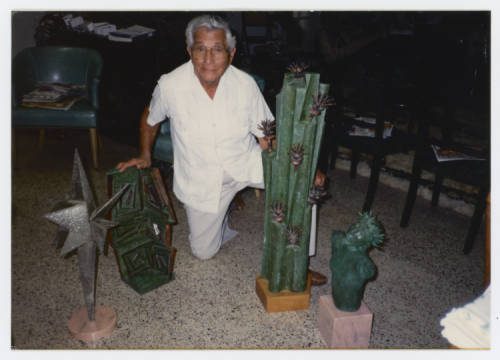
Medellín with his own copper sculptures in 1988. Photo courtesy of the Bywaters Special Collections, Southern Methodist University.
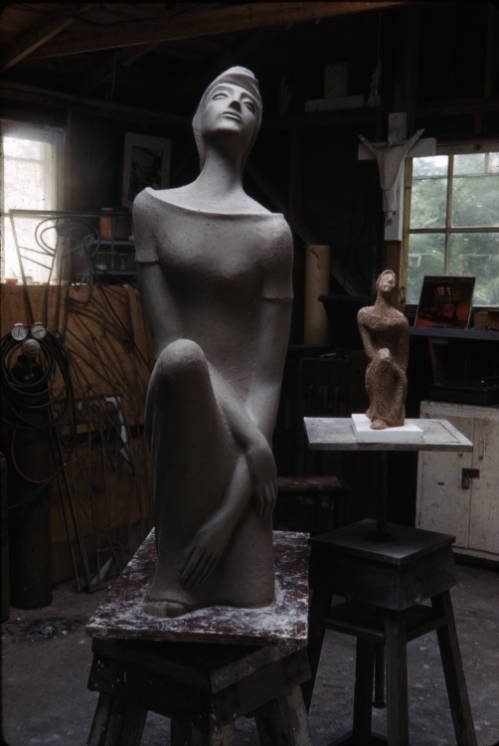
A clay garden figure that Medellín made for the Stekoll Oil Co. in 1959. Photo courtesy of the Bywaters Special Collections, Southern Methodist University.
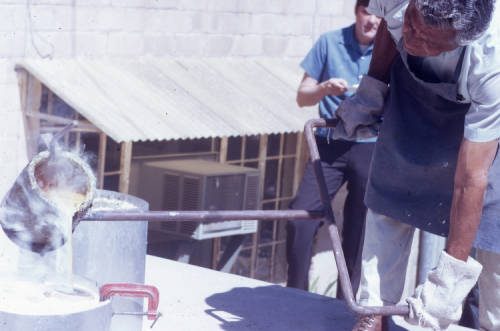
Medellín with a student at El Sibil in the 1960s. Photo courtesy of the Bywaters Special Collections, Southern Methodist University.

